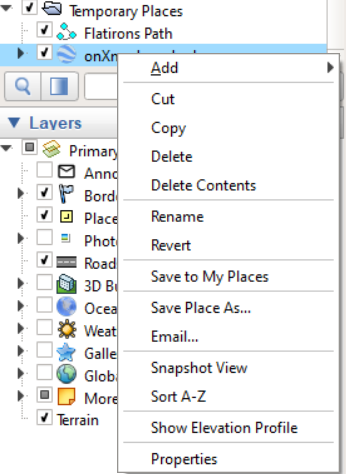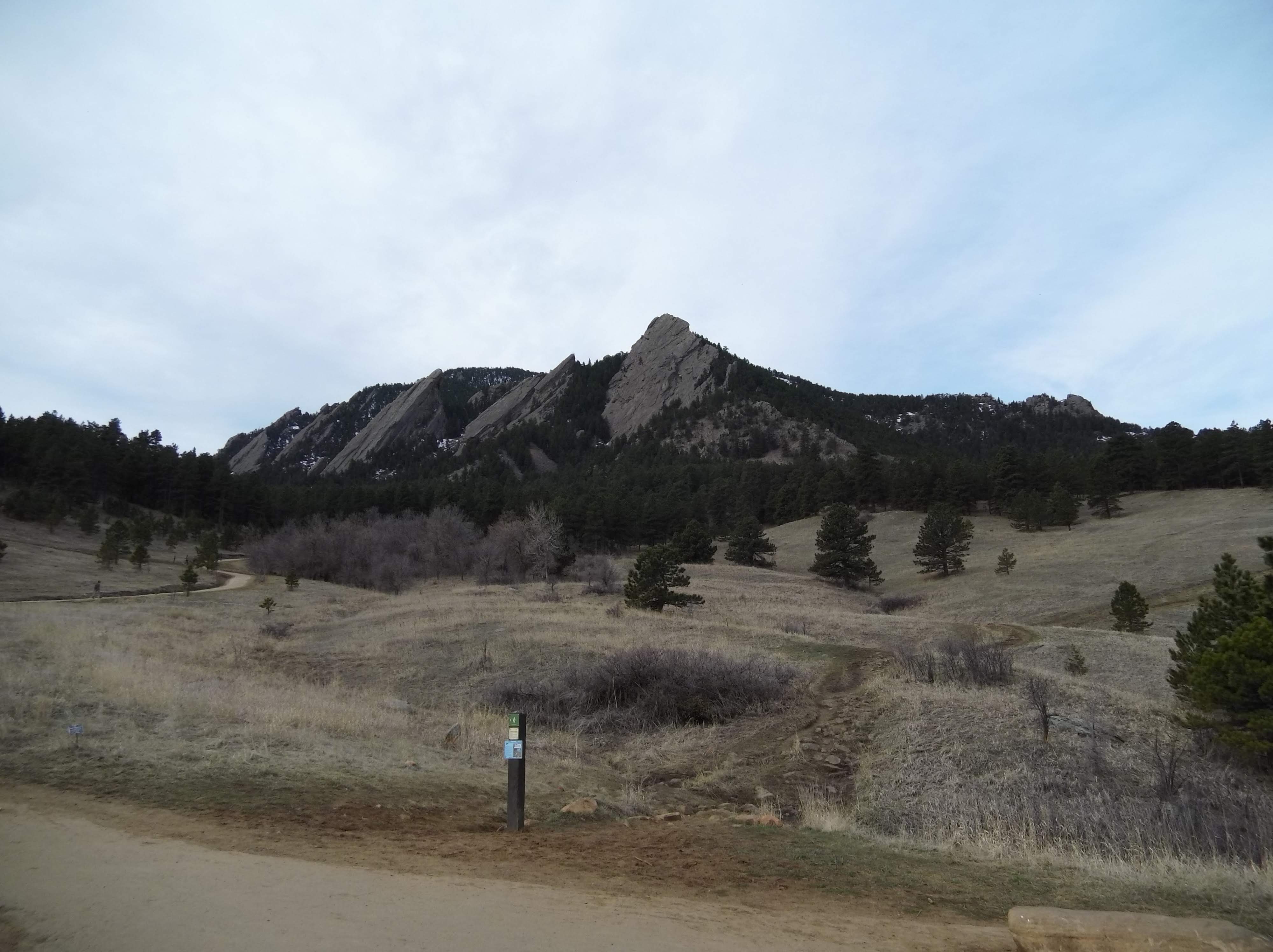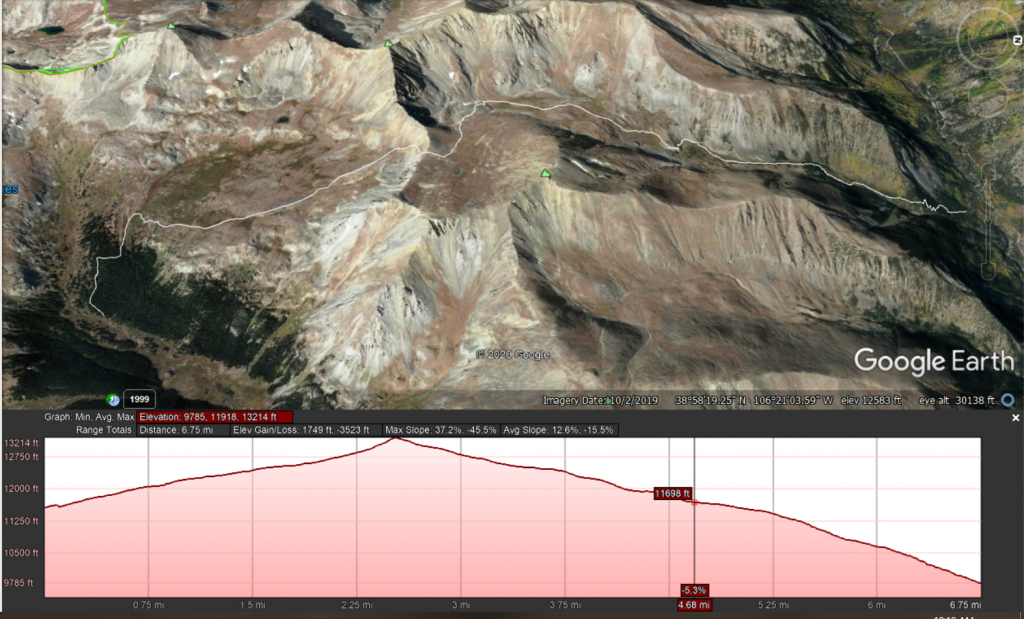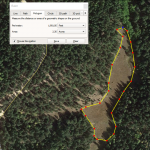Have you ever eyeballed a path on Google Earth or OnX maps and thought, “Oh, it’s just a mile or two, I can do that no problem!“. Well, unless your trail is somewhere like All-Trails or another hiking website, chances are you don’t know what the elevation gain loss curve looks like. Are you comfortable climbing 1500 feet? Over three miles? Just because you can keep a walking pace of 1.5 miles an hour doesn’t mean that you will be able to when you’re staring at a wall of rock.
How else do you know how steep it’s going to be unless you have that data to work with? Maps are often deceiving, and we as humans like to play tricks on ourselves. Tight lines on a topographic map mean steep country, but when you look at the map, miles away from the territory and say “Eh, it’s a quarter inch on the map!” you might be in for a hurtin’.
Blaze a new Trail
In our last tip we explored the Ruler option in Google Earth in order to check acreage for a field or pond. Using that same tool and selecting the Path tool will allow us to analyze the elevation curve, showing the literal ups and downs of your hike.
Start by selecting the ruler icon from the top bar of Google Earth, now click on the Path tab, and make sure the “Show Elevation Profile” checkbox is selected.

From here, your cursor will become a squared off crosshair allowing you to approximate the path of travel for your hike. Drop a few waypoints and you’ll see the graph automatically update with the elevation curve associated with the total travel distance of your path.
Tip: Did you make a mistake while adding a point? Hit the Delete key and it’ll delete your most recent point added to the map.
Here I selected a popular hike in Boulder, Colorado — the Flatirons 1&2 hike from Chautauqua Park. It’s an awesome hike but the elevation gain is pretty substantial. We wrote about it in a previous entry, self flagellation in the Flatirons.
Tracing the path of the existing trail generates the elevation curve live as we add points. So let’s take a look at the chart here. Not much of a curve is it? It just kind of goes up. Well, that’s because we only have one side of the trip! But this gives you a good idea as to what’s going on. Over the course of 1.46 miles of total travel one direction you go from 5697ft of elevation from the City of Boulder to 7102ft of elevation at the top of the trail.
Oof. That’s an elevation gain of 1405 feet! That said, you’ll lose that elevation, obviously, as you descend. So you’ll have a total delta of elevation of 2810 feet during the course of your total hike. Be prepared.
If you’re looking for the total curve, which you would over a loop, lollipop, or out-and-back, trace back over your path to make the whole trip. Or just take mental note of what goes up must come down.
Import a Path
Maybe you’ve already been planning a hike, hunt, or backpacking trip and you want to see what you’re getting into. Perhaps you’ve just come back from a trip that kicked your butt, or you turned back and want to know what happened. You can import a path or “GPS Track” into Google Earth and measure it as well.
In OnX Maps you can export your path as either GPX or KML, both will import into Google Earth. Here I imported a path from the Missouri Gulch Trail in the Collegiate Peak Wilderness that I hiked last year.
Import simply by opening the file from File->Open in Google Earth and your terrain feature will be added to Temporary Places.

From here it’s easy to pull the elevation gain loss curve by right clicking the terrain feature in Temporary Places and selecting Show Elevation Profile.

Near instantly the Elevation Gain Loss Curve shows up at the bottom similarly to when we traced a new path. This hike also is no joke.
What is this Sorcery?
Google Earth uses something here called Digital Elevation Models (DEM) data to correlate GPS points to the known ground elevation for that given point. So going over the course of your GPS track point-by-point it allows the software to generate an elevation profile or elevation gain loss curve.
Having this curve can help you better prepare both in terms of physical fitness and gear prep. Do you want your day hikers or maybe more mountaineering boots during this outing? The grade and elevation gain curve will strongly indicate the type of terrain you’ll encounter.
Pace Yourself
I chose a fairly extreme example above with the Flatirons hike, but it’s not so wild to think that a beginner would do their research and find a place on the map they’d want to go and try to hunt. I aspire to eventually do some chukar hunting, and know that they live in steep territory. Sometimes I’m just the pack up the truck and go type of guy, and that’s gotten me into some trouble in the past with pulled muscles and a sore back. Do yourself a favor and plan out your hikes and it’ll pay dividends.

Here at APT Outdoors we love to cyber-scout and use various data sources to investigate new hunting locales and better inform our decisions on where to hunt next. If that interests you, you should check out our Maps for Lunatics page!












